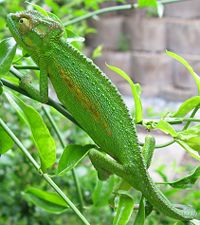Sandbox chameleon
From Proteopedia
(Difference between revisions)
| Line 8: | Line 8: | ||
==Methodology== | ==Methodology== | ||
| - | Design the longest possible sequence that can fold into an alpha-helix when inserted into one place in a protein sequence and a beta-sheet when inserted into another | + | Design the longest possible sequence that can fold into an alpha-helix when inserted into one place in a protein sequence and a beta-sheet when inserted into another. Two key references to read on this ones on a ''Chameleon'' peptide<ref>PMID:8614471</ref> and an analysis of Helix-to-Strand Transition Between Peptides with Identical Sequences<ref>PMID:10966577 </ref>. |
| - | + | ||
| - | Two key references to read on this ones on a ''Chameleon'' peptide<ref>PMID:8614471</ref> and an analysis of Helix-to-Strand Transition Between Peptides with Identical Sequences<ref>PMID:10966577 </ref>. | + | |
== Seeing is believing == | == Seeing is believing == | ||
Revision as of 16:34, 30 November 2014
Does the amino acid sequence really determine the 3D structure of a peptide?')
| |||||||||||
References
- ↑ Minor DL Jr, Kim PS. Context-dependent secondary structure formation of a designed protein sequence. Nature. 1996 Apr 25;380(6576):730-4. PMID:8614471 doi:http://dx.doi.org/10.1038/380730a0
- ↑ Zhou X, Alber F, Folkers G, Gonnet GH, Chelvanayagam G. An analysis of the helix-to-strand transition between peptides with identical sequence. Proteins. 2000 Nov 1;41(2):248-56. PMID:10966577

